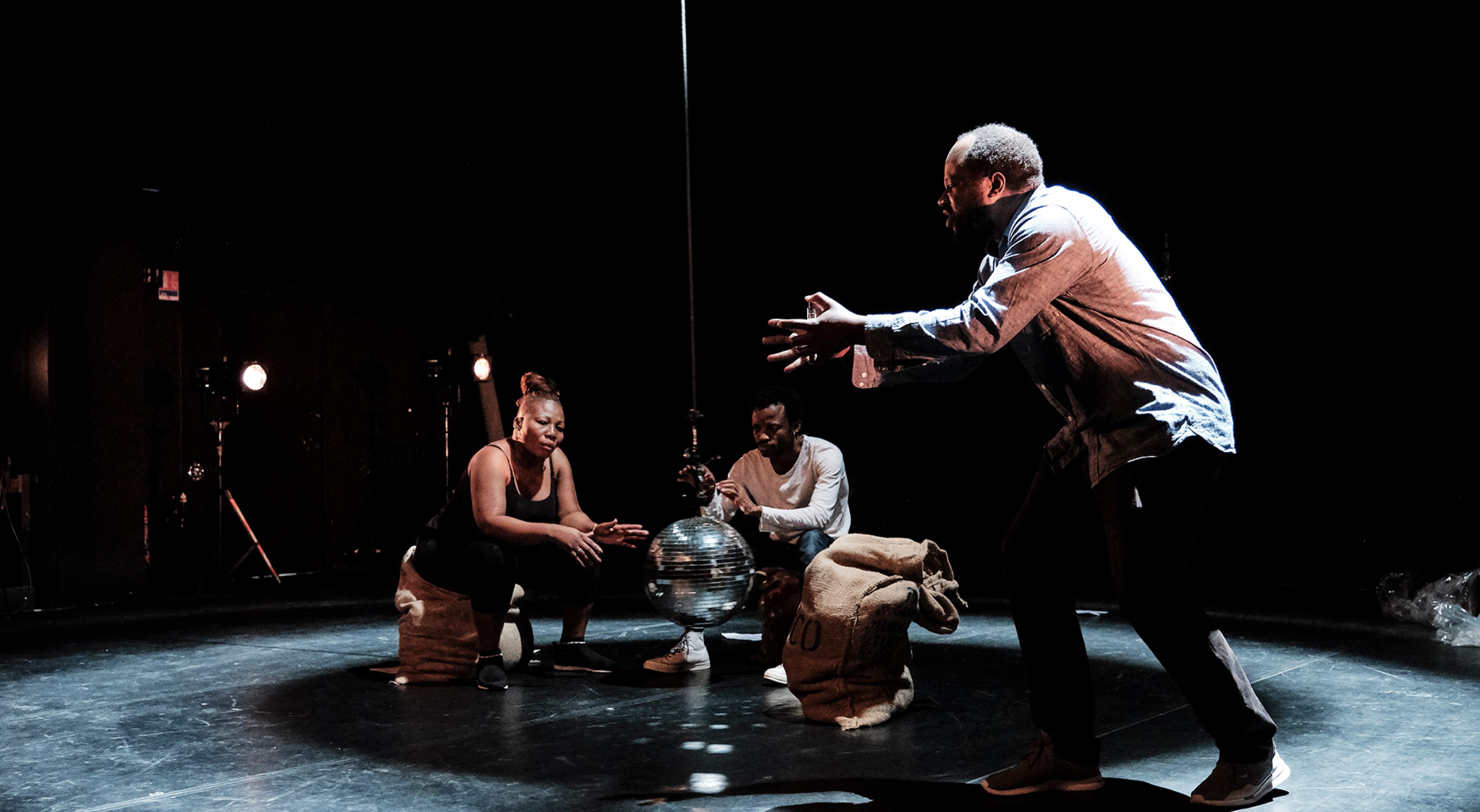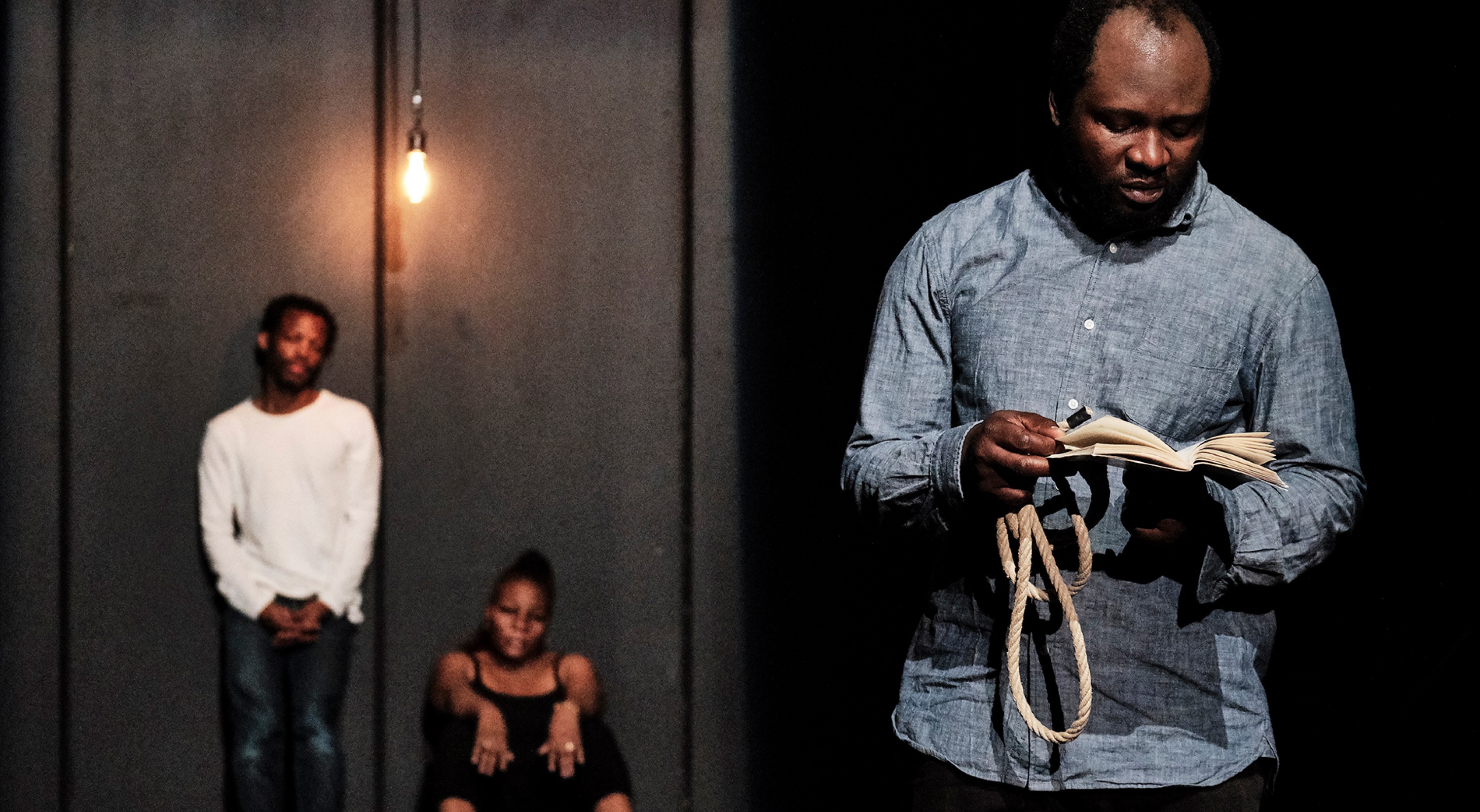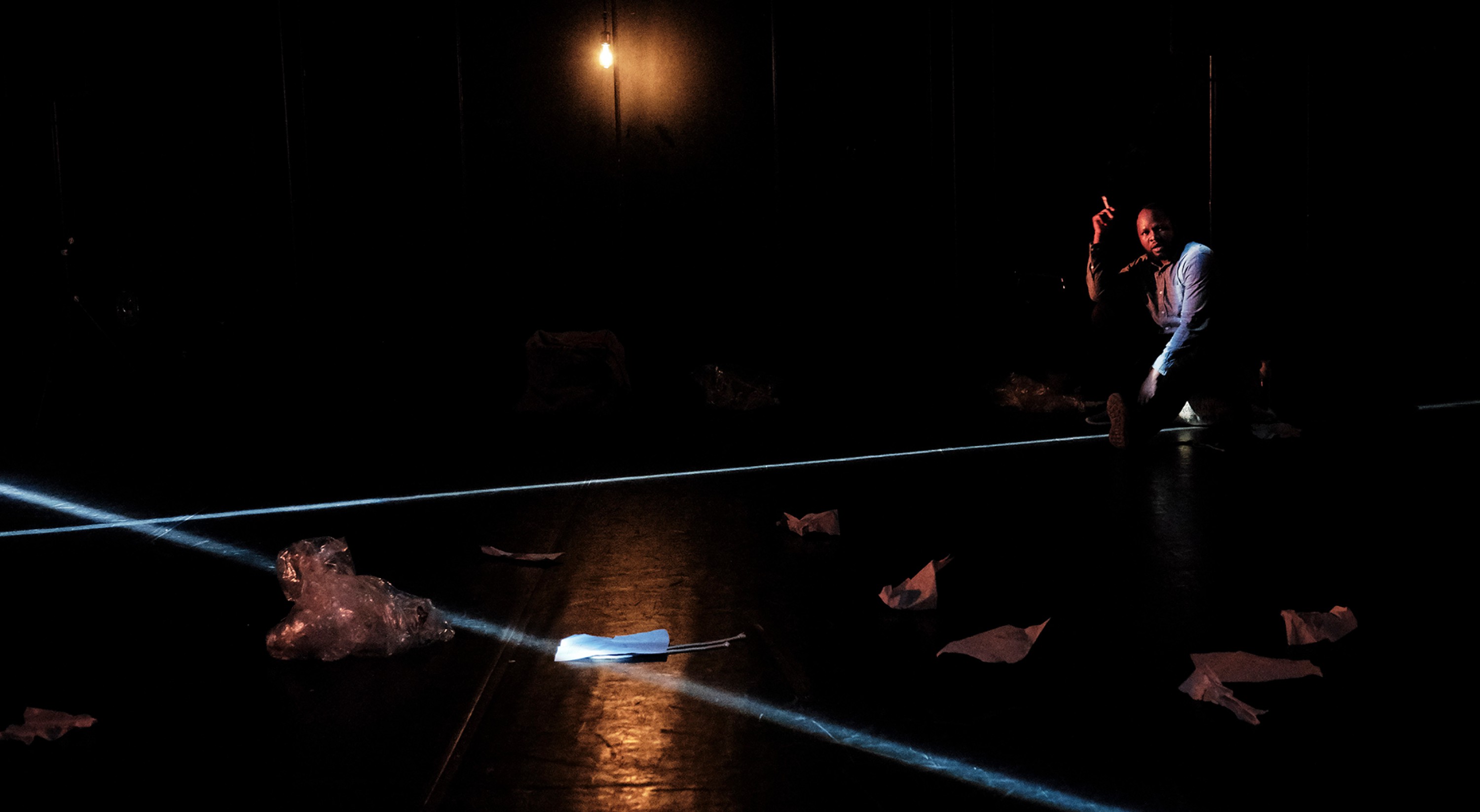Faustin Linyekula
Congo
novembernov 20 – 23
Conception and directed by, Faustin Linyekula
Text, Éric Vuillard
With Moanda Daddy Kamono, Faustin Linyekula, and Pasco Losanganya
Music, Franck Moka, and Faustin Linyekula
Lighting, Koceila Aouabed
Costumes, Ignace Yenga
Produced by Studios Kabako (Kisangani)
Coproduced by Ruhrtriennale – Festival der Künste ; KunstenFestivalDesArts (Brussels) ; HAU Hebbel am Ufer (Berlin) ; Théâtre Vidy-Lausanne ; manège – Scène Nationale – Reims ; Holland Festival (Amsterdam) ; Théâtre de la Ville-Paris ; and Festival d’Automne à Paris
In association with Théâtre de la Ville-Paris ; and Festival d’Automne à Paris
With support from CDN de Normandie-Rouen, CND Centre national de la danse (Pantin) and KVS (Brussels)
With support from Adami
First performed on the 24th May 2019, as part of Kunstenfestivaldesarts (Brussels)
Blending theatre, dance and song, the Congolese artist Faustin Linyukela, recognised for his performative-based work on the socio-political situation in Congo, turns his attentions to the colonial period. Backed up by Eric Vuillard’s irreverent and poetic words, he unearths the deeply-buried secrets of the rubber plantations.
“Congo does not exist…it needs to be invented. 1884, the Berlin Conference, King Leopold’s idea is almost as large as his stature, he wants his own personal colony”. Faustin Linyekula went deep into the heart of a former rubber plantation near Ubundu in order to immerse himself in “this Congo, where the humming of the forests and rivers is interrupted by the crack of the whip, like the flap of a banner”, evoked by Aimé Cesaire. He recorded its sounds and captured its changes, in preparation for the physical, carnal and musical substance of his latest creation. Pascal Losanganya took his inspiration from traditional songs of the region: what song could we hum in order to outlast infamy? While Moanda Daddy Kamono tackled the text, Faustin Linyekula looked deep into the inner confines of his body in search of the possibility of a form of dance. In Eric Vuillard’s narrative, the director and choreographer met with children who have suffered mutilations, and to whom the writer gives a name and a face… children who whose right hands were cut off for not bringing in enough rubber. In the face of this past, how can we speak, dance or even keep to our feet?
––––––
Estimated running time : 1h45
In the same place


